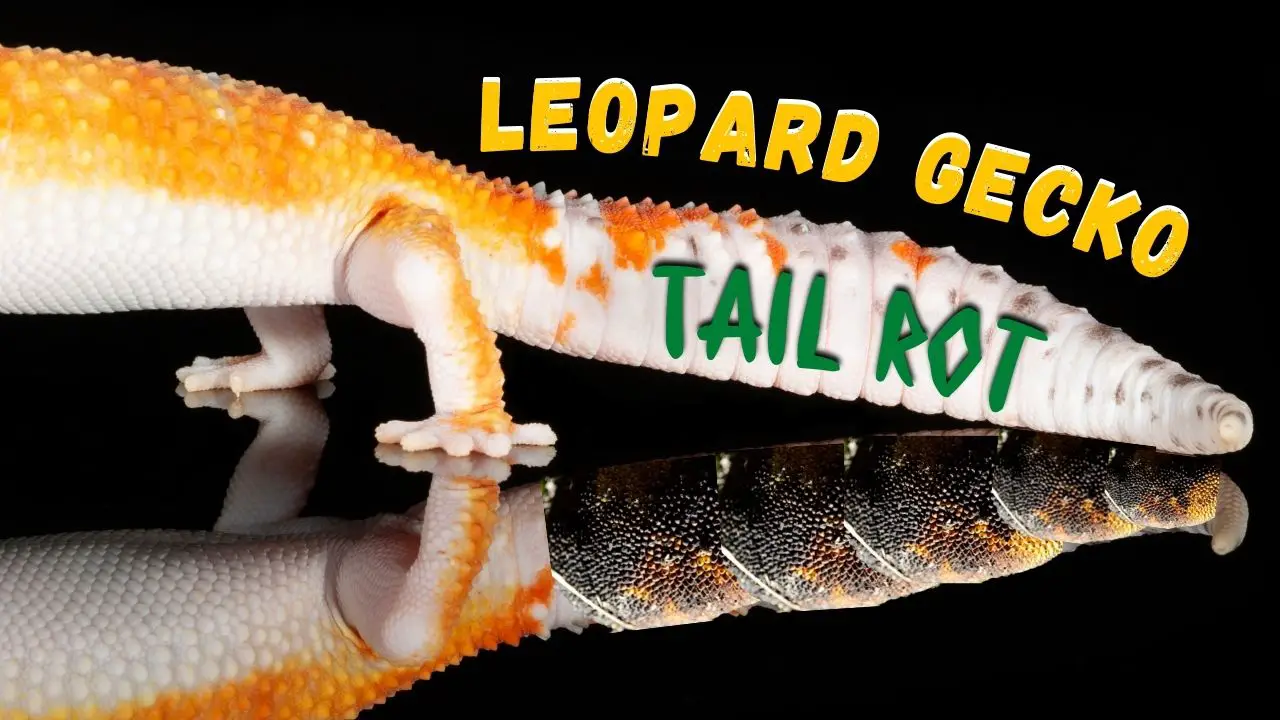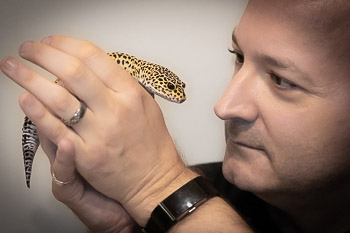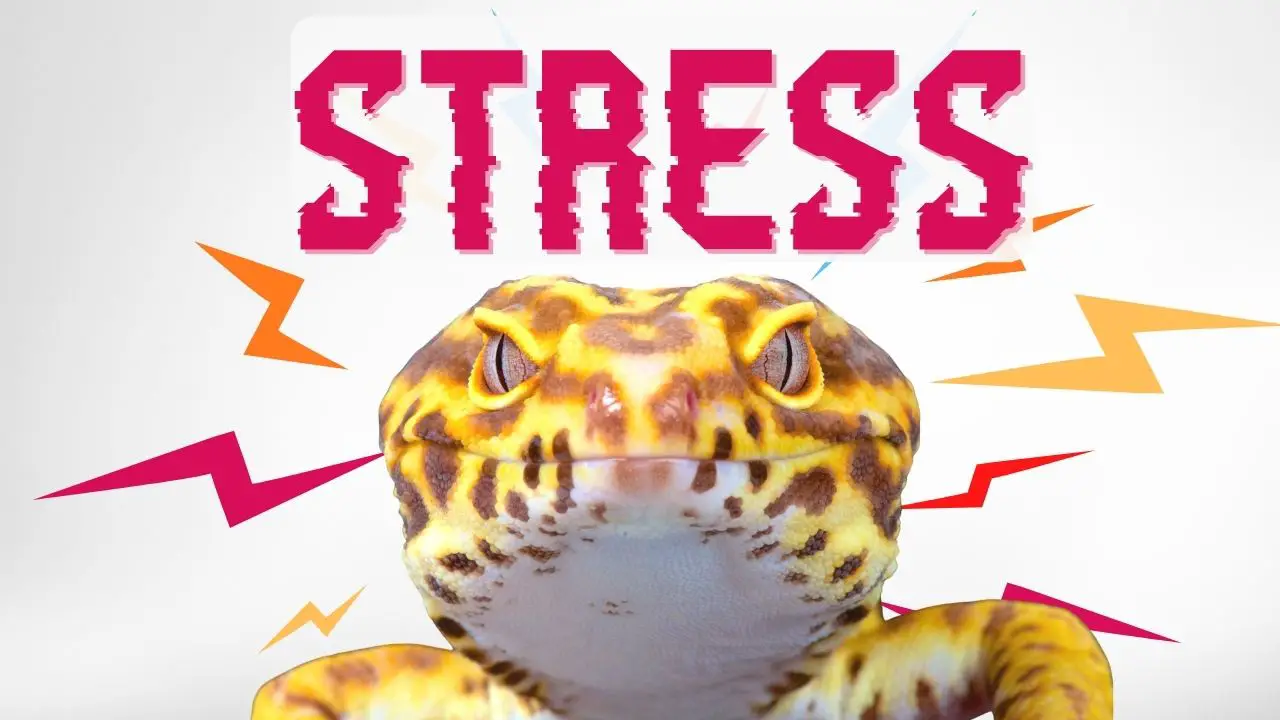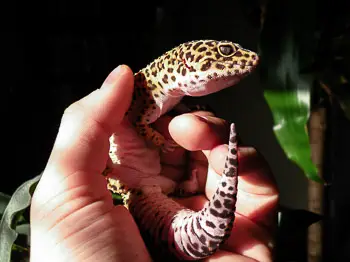You’ve heard about Leopard Gecko tail rot, but don’t know much about it. What causes it? How does it affect geckos? How do you spot it? And what can be done to treat or prevent it?
Leopard Gecko tail rot is a bacterial infection that affects both male and female leopard geckos. The disease usually starts at the tip of the tail and, if left untreated, the condition can spread resulting in tail loss or death.
Let’s learn what common conditions lead to tail rot, as well as how to treat and prevent it.
What Is Leopard Gecko Tail Rot?
Tail rot (tail necrosis) occurs when the skin of the gecko’s tail becomes infected. This condition usually starts off at the tip of the tail and can be easy to miss if you don’t know what symptoms to look out for.
Tail rot is a bacterial infection. The infection spreads up the tail, discoloring and killing the flesh as it advances. If left untreated, the infection can spread causing severe health issues. This problem is often overlooked because many owners don’t notice anything unusual until the condition has advanced.
Symptoms of Leopard Gecko Tail Rot
Tail rot is caused by bacteria and causes a darkening of the skin that looks like the tail is shriveling up. You may first notice tail rot as a black or brownish spot on the tail.
The affected area usually becomes hard, dry, and brittle. Tail rot will typically start as a small spot at the tip of the tail, and will spread if not addressed.
Key signs of Tail rot:
- Darker coloration starting at the tip of the tail
- Hard and brittle skin in the affected area
- Leathery appearance of affected tissue
- Lethargy
- Loss of appetite/Weight loss
Related Post – Leopard Gecko Sickness – Other reasons your leopard gecko may be sick.
Causes of Leopard Gecko Tail Rot
There are several factors that can contribute to this problem.
Tail rot is most commonly caused by:
- Bacterial Infection
- Injuries (e.g. trauma, bites, etc.)
- Improper shedding
- Blood Clots
Tail rot is primarily caused by bacteria (Pseudomonas aeruginosa). This bacterium lives in moist areas like soil and water, and typically enters the body via cuts or wounds. Insect bites, bites from another animal, or scratches can create open sores for the bacteria to enter. Once inside the body, the bacteria can spread through the tail into other parts of the body and internal organs, causing illness and, eventually, death.
Trauma or injury to the tail from an accidental fall or fight with another lizard can lead to tail rot. This is caused by bacteria growing inside the wound. If you notice darkening or discoloration of the tail, it could indicate that the tail is beginning to rot.
Improper shedding, or “stuck skin,” can constrict the tail and restrict blood flow. The tissue in the portion of the tail that is starved of blood will eventually die and tail rot may take hold.
Incidentally, improper shedding can cause the same issues with a leopard gecko’s toes. Shed skin can often get “stuck” on toes and cause the same kind of necrosis, resulting in lost toes. (Check our post on giving your leopard gecko a bath if you’re having issues with skin not coming off during shedding.)
Blood clots can also impede blood flow to regions of the tail, causing healthy tissue to atrophy and die.
Can You Cure Leopard Gecko Tail Rot?
If you notice signs of tail rot, it’s important to act quickly to provide proper treatment. The good news is that the spread of tail rot can be stopped if caught early enough. Treatment involves correcting the underlying problem and providing supportive care.
Treating wounds immediately and antibiotics can prevent tail rot from taking hold. However, there is no guarantee that the condition will be reversible and you should always consult a qualified vet if you see signs of tail rot or other diseases.
Treatment or Leopard Gecko Tail Rot
Tail rot is best treated by a veterinarian that specializes in reptiles. Unfortunately, tail rot usually involves amputating the affected portion of the tail to prevent the necrosis from spreading to healthy tissue.
Because the leopard gecko’s tail rot is typically caused by a bacterial infection, a topical antibiotic ointment may be used to treat this condition. Antibiotics are typically prescribed by veterinarians.
Other effective treatments include removing the dead tissue from the gecko’s tail and cleaning the area thoroughly. Often, this involves amputating the affected part of the tail.
The thought of amputating all or part of your gecko’s tail may seem extreme and scary. Keep in mind that leopard geckos can drop their tails voluntarily to escape predators. Their tails will grow back (though never quite as nicely as their original tail.) Better to lose the tail and live another day.
Related Post: Learn more about leopard gecko tails.
Tips for Leopard Gecko Tail Rot Prevention
Responsible reptile keepers realize how important it is to keep your leopard gecko healthy. This includes preventing tail rot. Tail rot is one of the most common illnesses among leopard geckos. While it doesn’t always mean death, it can lead to tail loss and a very sick animal. Luckily, there are some simple things you can do to help prevent this problem and keep your pet healthy and happy for many years to come.
One way to keep your pet healthy is to make sure that your pet’s environment is clean. Make sure his or her cage is cleaned out regularly, especially around food and water bowls, as well as their chosen “poop corner.” Feces can harbor harmful bacteria that can infect your gecko. You don’t want to allow bacteria to build up in your pet’s environment.
If you notice signs of infection such as darkening, swelling, or discharge coming from your pet’s tail, make sure you seek medical attention immediately. Your vet will likely prescribe antibiotics to treat the infection.
Finally, ensure that the gecko receives proper nutrition. Avoid overfeeding your pet. Make sure he or she gets enough calories to maintain a healthy weight. Overweight pets tend to have weaker immune systems, making them more susceptible to infections.
Leopard Gecko Tail Rot – Wrap Up
Tail rot in leopard geckos is a bacterial infection that can be serious if not quickly and properly treated.
Common symptoms are discoloration and hardening of the tail. Your gecko may also experience a range of symptoms such as lethargy, loss of appetite, and weight loss due to the illness.
If your lizard develops signs of tail rot take him/her to your veterinarian immediately. Your vet will likely recommend antibiotics and possibly surgery to remove the necrotic tissues (which usually means amputating the tail.) Veterinarians can provide advice about which treatment option is most appropriate for your pet.





